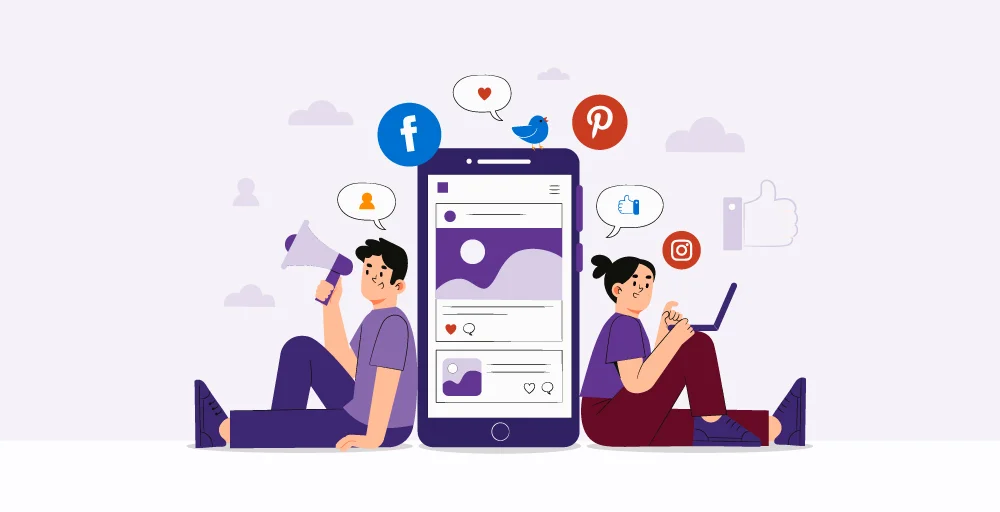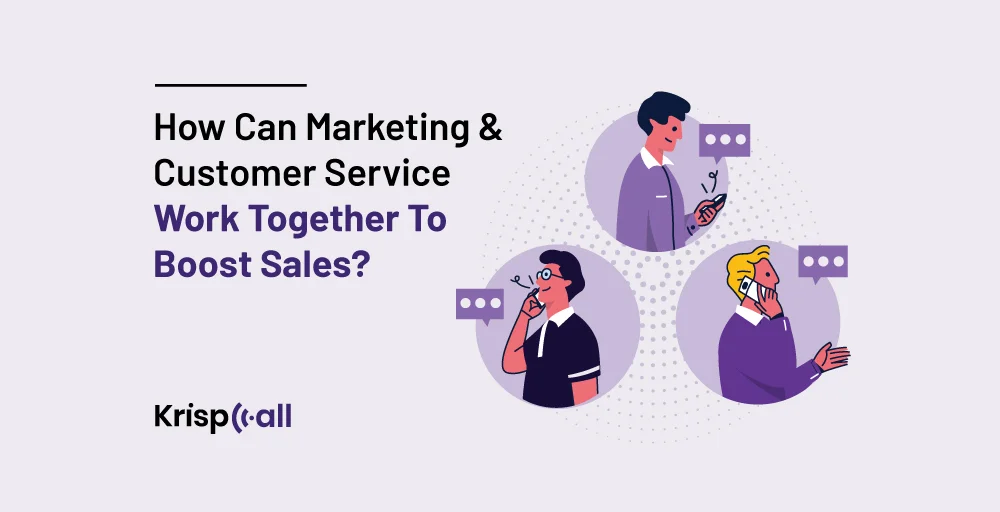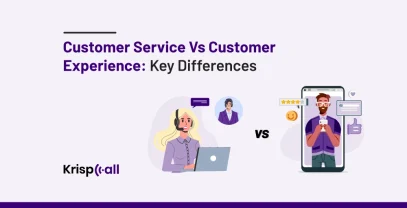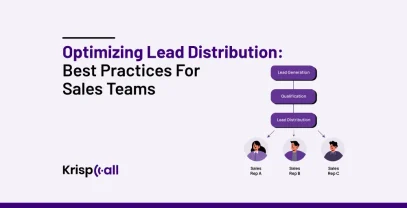Have you ever faced difficulty 😞 aligning the marketing and customer services departments? One thing is for sure; an improper alignment leads to the delivery of confusing messages, a misunderstanding of the users, and loss of the optimal sales opportunity.
But businesses can benefit greatly from aligning these two functions – marketing and customer service. This collaborative approach helps businesses to suggest 😀 products effectively, enhance customer experience, and increase sales.
This extensive guide will suggest 10 ways “How marketing and customer service work together to boost sales”. We will also walk you through the information why these two teams’ co-ordination is essential.
🔑 KEY HIGHLIGHTS
- Marketing and customer service can work together on social media support, unified messaging, customer loyalty programs, and more.
- These two integral parts of business coordination are essential for consistent messaging, feedback loops, problem resolution, and more.
- If marketing and customer service don’t align perfectly, it may lead to customer dissatisfaction, inconsistent messaging, and decreased loyalty.
Why are marketing and customer service coordination essential?

Marketing and customer service coordination is essential for any business. This collaboration ensures a seamless and consistent customer experience, aligns customer expectations with service delivery, and enables faster issue resolution, leading to increased customer satisfaction and loyalty.
Here are several key reasons why the alignment between marketing and customer service is essential:
- Consistent messaging: The efficient collaboration of marketing and customer service teams ensures that the personalized message consistently reaches customers. This strategy fosters a cohesive brand image and strengthens the relationship with customers.
- Enhanced customer experience: Marketing and customer service team coordination helps businesses get accurate information on customer needs, preferences, and pain points, enabling them to personalize their multi-channel marketing strategies accordingly.
- Feedback loop: A strong feedback loop between marketing and customer service is vital. Marketing creates an image of the product or service through advertising, while customer service interacts directly with customers, gathering their reactions. This interaction provides valuable data on customer sentiment, satisfaction, and discrepancies between marketing promises and the actual experience.
- Problem resolution: The marketing team can work with customer service to identify customer issues. Marketers can track and address these problems by updating website copy, FAQs, or other materials. This collaboration empowers customer service to resolve issues more effectively and helps prevent similar problems in the future.
- Cross-selling and upselling opportunities: When marketing and customer service collaborate, they unlock significant cross-selling and upselling opportunities. Customer service reps gain insights into customer needs and behaviors, which they share with marketing. This allows for targeted campaigns promoting complementary products or services.
What may happen if marketing and customer service functions don’t align?
Marketing is the face your prospects see, and customer service is the face they get to interact with when they become customers. If the two faces don’t match, customers might get something that isn’t what they were looking for.
Since first impressions are lasting, businesses often face significant customer dissatisfaction when departments are not aligned.
Here are the major things that happen when marketing and customer service functions don’t align:
- Customers might get conflicting information, which can undermine their trust in the brand.
- Without shared insights, opportunities for cross-selling and upselling can be missed.
- Customer service might have a harder time-solving issues without support from marketing.
- A poor customer experience due to misalignment can lead to fewer repeat customers and less loyalty.
- Both teams might end up doing the same work or working against each other, leading to inefficiencies and wasted resources.
In addition, if the marketing and customer service team didn’t align, the marketing team eventually missed out on valuable customer insights from the service frontline.
Ultimately, this hinders their ability to tailor messaging and potentially leads to a sales decline. However, aligning marketing and customer service can easily overcome this.
10 ways marketing and customer service can work together
Here are the ten ways marketing and customer service can work together seamlessly 👇:
1. Social media customer support

First and foremost, the marketing department can offer important information, from social media analytics to customer service. As a result, customer service can utilize this information to better understand trends and customers’ current state of mind. Then, reps can proceed to personalize conversations with customers, recommending the products that they actually want.
This personalized interaction and the positive experience with the brand eventually improve the customer experience.
It ultimately increases customer retention, fosters customer relationships, and increases the company’s sales and revenue.
2. Identify opportunities to upsell and cross-sell
Marketing and customer service departments should also collaborate to analyze customer interactions and purchase history to detect opportunities for upselling and cross-selling. Using this opportunity to share customer feedback and behavior patterns, they can launch targeted campaigns to promote related or support products or services.
This allows for increasing revenue and facilitating a higher brand value, as well as extending relationships with customers by offering personalized recommendations that consider individual needs and preferences.
In fact, all the aforementioned actions are also related to developing a customer-oriented business solution that expands financial & economic performance and enhances customer loyalty.
3. Content creation ideas
Customers want to interact with a brand that meets their unique needs. Content creation based on marketing and customer service ideas will make your brand relevant and more informative, resonate with your audience, and engage customers.
Customer service can gather information such as customers’ pain points, concerns, and issues with the product.
When representatives provide information about customer questions and complaints, the marketing team can provide engaging content, and endow the brand as an “expert in the industry.”
4. Sharing customer stories

The marketing department can also collaborate with customer service to share authentic customer testimonials and success stories. Besides, customer stories can be incorporated into marketing material, which allows customers to trust their business or product and facilitates a purchasing decision-making process. Moreover, stories make the brand relatable and connect to the customers emotionally.
Thus, it shows how products and services can change individuals’ lives, making them even more real to them.
Such collaboration will create a loyal customer base, thus enabling a business to be successful in a marketplace by developing a unique sell proposition that involves promoting a company by telling a story that would inspire customers.
5. Customer expectation-setting
Marketing and customer service collaboration can ensure a customer expectation that is perfectly aligned with their needs. While marketing materials, whether it’s website copy, advertisements, or social media posts, paint a picture of the product or service’s capabilities.
Here’s where customer service plays a crucial role. By sharing insights from real customer interactions, they can help marketing teams ensure their messaging aligns with reality. This might involve highlighting both a product’s strengths and limitations.
For example, marketing might showcase a new productivity app’s ease of use, but customer service feedback reveals some users struggle with a specific feature. They set a more realistic expectation by acknowledging this potential hurdle in the marketing materials.
6. Unified messaging
A harmonious customer experience attaches to a unified message across all touchpoints. When marketing and customer service collaborate on messaging, they ensure a consistent brand voice and avoid confusing customers with conflicting information.
This collaborative approach goes beyond just using the same language. It involves ensuring marketing materials, website content, FAQs, and even social media interactions all accurately reflect the customer service experience customers can expect.
7. Shared Goals

Both teams should have the same primary goals and objectives contributing to the business’s overall success, such as enhancing customer satisfaction, loyalty, and increasing revenue. Having shared goals would push both teams to work more effectively together and be each other’s priorities in ensuring measurable results.
Such an alignment would create a team-oriented environment in which all customer-oriented activities are done with a goal in mind: effectively meeting customer needs and enhancing business development.
8. Customer loyalty programs
Marketing and customer service can partner to design and market customer loyalty programs that reward patrons for their repeat business and advocacy. These two integral parts of the business can design a loyalty scheme that offers customized incentives based on user behavior and activity level.
Customer service can discover these enhancements for consumers and encourage them to sign up and participate, while marketing can spread the word through effective communication and targeted initiatives.
This partnership ensures firms’ long-term ties with their consumers, increasing retention & revenue and advocacy.
9. Product marketing
Engaging customer service in product marketing guarantees that the messaging is centered on the consumer and appropriate for the intended market. When customer comments and knowledge are added to product marketing campaigns, firms can develop interesting narratives around their products’ worth and advantages.
Reps for customer service have a real-time view of how the consumer engages with the item and can give vital advice on common issues and necessary characteristics.
Marketing can create more targeted and fruitful campaigns as a result of this cooperation based on what the consumer requires and why he purchases the product.
10. Work on developing buyer personas together
Marketing and customer service must work together to agree on the detailed characteristics of buyer personas. The buyer personas must fully reflect the business’s ideal buyer demographic and psychographic characteristics.
Thus, by combining the reps’ and marketers’ knowledge in one document, these two teams can outline the target audience in detail. This helps them create marketing campaigns for their potential customers. Ultimately, it leads to a focus on increasing your company’s sales.
Conclusion
Marketing and customer service reps are an integral part of any business. While marketers promote the products on the frontline, reps interact with customers actively, listening to their experience with the products and services.
By working together, marketing and customer service teams can create a smooth and enjoyable customer experience. Marketing can use the insights from customer service to craft messages that really resonate with customers. Meanwhile, the customer service team can deliver on the promise made by marketing. This teamwork not only helps build trust but also turns leads into loyal customers.
By working together, businesses can suggest products efficiently, create targeted marketing campaigns, and enhance overall customer experience. These integral parts can collaborate together in social media customer support, unified messaging, customer expectation setting, and much more.





